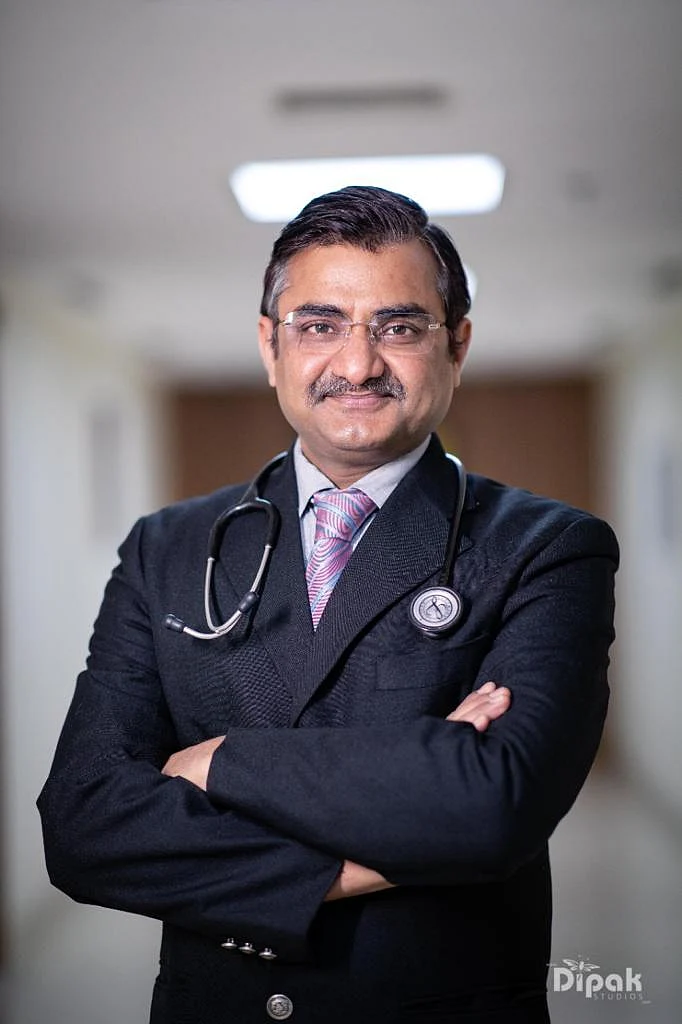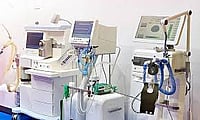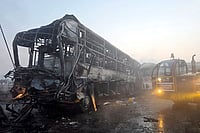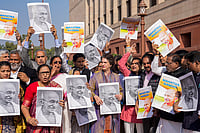Once perceived as a disease confined to elderly male smokers, lung cancer is rapidly evolving into a broader public health threat — with non-smokers, women, and even young adults increasingly being diagnosed, according to health experts. While tobacco remains the most prominent risk factor, other environmental and occupational exposures are emerging as equally dangerous but less acknowledged contributors.
“Air pollution, indoor smoke, and industrial exposure are no longer peripheral issues — they are at the centre of the lung cancer surge we are witnessing in India,” Dr. Vijay Kumar Agarwal, Director and HoD (Pulmonology and Critical Care Medicine) at Yatharth Super Speciality Hospital, Faridabad told The Health Outlook.
Globally, lung cancer is the leading cause of cancer-related mortality, responsible for more deaths each year than breast, colon, and prostate cancers combined. According to the World Health Organization, over 2.4 million people were diagnosed with the disease in 2022, resulting in 1.8 million deaths — nearly one in every five cancer deaths worldwide.
In India, lung cancer remains among the top three cancers in men and is rising sharply in women, a trend largely attributed to changing lifestyles, urban air quality, and increased exposure to indoor pollutants.
Dr. Agarwal noted that while an estimated 85% of lung cancer cases globally are linked to tobacco use, India presents a far more complex landscape. The widespread consumption of bidis, often misperceived as less harmful, is particularly concerning.
“Bidis, in fact, release significantly more tar, nicotine, and carbon monoxide than regular cigarettes. When combined with gutkha, hookah, and chewing tobacco, the cumulative damage to lung health is profound,” he said.
According to the Global Adult Tobacco Survey, nearly 270 million Indian adults, or one in three, use tobacco in some form — a figure that underscores the scale of the challenge.
Yet, it is the rising incidence of lung cancer among non-smokers that has begun to alarm public health professionals.
Citing the World Health Organization’s classification of PM2.5 particles as Group 1 carcinogens — placing them in the same risk category as tobacco smoke — Dr. Agarwal warned that air pollution is a growing silent killer.
“Cities like Delhi, Lucknow and Kanpur consistently report PM2.5 levels 10 times above the permissible limit. Even a 10 microgram rise in long-term exposure significantly increases lung cancer risk, even in lifelong non-smokers,” he said, referencing findings published in The Lancet.
In rural areas, the risk often originates from within households. Nearly 40% of rural homes still use biomass fuels — wood, coal, or dung — for cooking. Poor ventilation and prolonged exposure to chulha smoke result in chronic respiratory illness, particularly among women and children.
“Schemes such as the Pradhan Mantri Ujjwala Yojana, which aims to provide LPG connections to rural households, must be expanded and sustained through subsidies and education,” Dr. Agarwal emphasised.
India’s growing industrial workforce is also at risk. Prolonged exposure to asbestos, silica dust, diesel fumes, and unregulated industrial emissions contributes significantly to the disease burden, he notes.
“What compounds the crisis is the frequent misdiagnosis of lung cancer as tuberculosis,” Dr. Agarwal pointed out. “Both diseases present with similar symptoms — persistent cough, fatigue, and weight loss. This leads to months of inappropriate TB treatment before cancer is even considered.”
By the time imaging tests like CT scans or PET-CT and biopsies are conducted, the disease has often advanced beyond curative treatment.
Timely diagnosis remains critical. A cough lasting more than three weeks, chest pain, blood in sputum, persistent hoarseness, or breathlessness must be thoroughly investigated. Other red flags include unexplained weight loss and repeated chest infections.
“Any persistent cough, especially in adults over 40 or those exposed to smoke and pollution, should not be ignored. Early imaging can save lives,” Dr. Agarwal warned.
Despite the common perception, non-smokers are not immune. Globally, 15–20% of lung cancers occur in lifelong non-smokers — a figure estimated to be even higher in India, particularly among women.
“This reflects not only indoor air quality and passive smoking, but also genetic predisposition and prior lung infections such as tuberculosis or fibrosis,” he added.
On a more optimistic note, lung cancer treatment has advanced rapidly in recent years. Surgical interventions remain the gold standard for early-stage disease, and newer robotic and minimally invasive techniques now offer reduced complications and faster recovery.
For advanced-stage cancers, immunotherapy and targeted therapies have significantly improved survival outcomes.
“Drugs such as pembrolizumab, nivolumab, and atezolizumab are revolutionising treatment by enabling the patient’s immune system to attack cancer cells,” Dr. Agarwal said. “Targeted therapies like osimertinib or alectinib work on specific gene mutations, making treatment more precise.”
Emerging therapies, such as datopotamab deruxtecan, recently approved in 2025, offer hope even for patients who are resistant to previous treatments.
“These breakthroughs are shifting lung cancer from a terminal illness to a manageable chronic condition,” he observed.
Despite medical breakthroughs, access to quality care remains uneven. While urban centres benefit from well-equipped oncology units, patients in semi-urban and rural regions continue to face high treatment costs, diagnostic delays, and limited infrastructure.
“Molecular testing, essential for personalised therapy, is still not widely available or affordable,” Dr. Agarwal noted.
The government must strengthen public health schemes to cover both diagnostics and modern therapies. Public hospitals should be equipped with essential tools such as CT scanners, biopsy instruments, and genetic testing facilities.
Comprehensive public health efforts must also tackle tobacco control, enforce air quality regulations, and promote awareness.
“Clean air must be treated as a basic human right,” emphasised Dr. Agarwal. “This requires coordinated environmental policy and public health action.”
Campaigns at primary healthcare centres urging patients to report persistent coughs, and health education drives about household smoke exposure, are low-cost yet high-impact interventions.
Health professionals, civil society, policymakers, and the media must work together to address the crisis. General practitioners should be trained to identify early warning signs, and every consultation must be an opportunity to encourage tobacco cessation, he recommended.
Community organisations can host lung health camps, promote clean cooking solutions, and provide protective gear to at-risk workers.
“Lung cancer is not inevitable,” Dr. Agarwal concluded. “It is preventable, and increasingly treatable — if diagnosed early. India must shift from ignorance to awareness, from urban privilege to rural inclusion, and from treatment to prevention.”



























